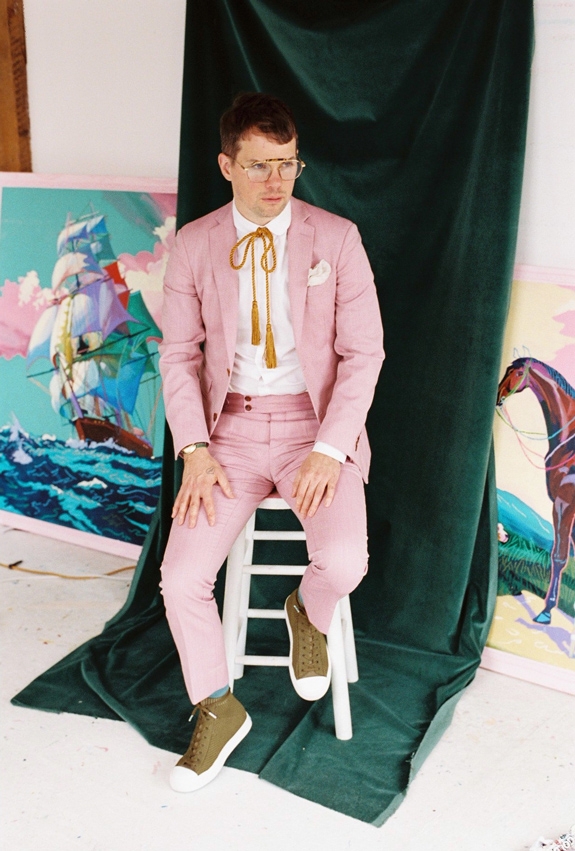The Art of Style with Andy Dixon

All the while, assigning value to valuable objects
Paintings of expensive things will become expensive things themselves: the seemingly simple yet profitable concept behind Andy Dixon’s depictions of luxury objects and bourgeois lifestyles. The Vancouver-born artist, who assigns these ideas to vivid acrylic canvases with rough pastel lines, uses his medium to reconcile with the psychology of value, and the perceptual price tags attached to art. Borrowing subject matter from lavish settings and eBay listings of high-fashion knockoffs, Dixon submits to his role in allowing society to appraise the worth of commodities.

“I grew up in the DIY punk scene in the ‘90s when there was a huge stigma attached to selling out, and the idea that making art for money meant the work was no good anymore.” The artist today uses his paintings as an objection to that logic, which isn’t his only viewpoint that has evolved over time. “I was really anti-fashion in those days,” he says of his on-stage dress code. “I saw the irony in the fact that punk had its own uniform, but was very conforming in that store-bought studded belt kind of way.”
Feeding a growing interest in authenticity in the luxury realm, Dixon began seeking subjects in designer label eBay listings, and became fixated on one Chanel jacket in particular. “I couldn’t find any proof that the Chanel bomber that everyone knows ever existed as a real Chanel piece. You can’t even call it a knockoff because a legitimate one was never created. It’s really meta how something completely fabricated could morph into a cult image.”

We photographed Dixon in his Mount Pleasant studio, where even the walls reflect the same signature blush tone as his recent collection of work. “I guess when you’re interested in something it just bleeds into all facets of your life. My living room is furnished in the same palette as well. It’s just what I’m drawn to whether I’m shopping for furniture, clothes, or paint.”

Pink Suit
“I had this idea that I wanted to wear the tassels you see hanging off of big velvet curtains, which led me to these which are actually made for graduation caps. I ordered about fifteen of them. I’m such a sucker for that — the way to market to me is to show me the exact same item in every solid color.”

Gucci Sweatshirt
“Everyone comments on how well all of my pieces work together, and I think it’s just because I have such a specific color palette that there are no wildcards. Everything that I wear just happen to be colors in my paintings, and I know how they all fit.”

